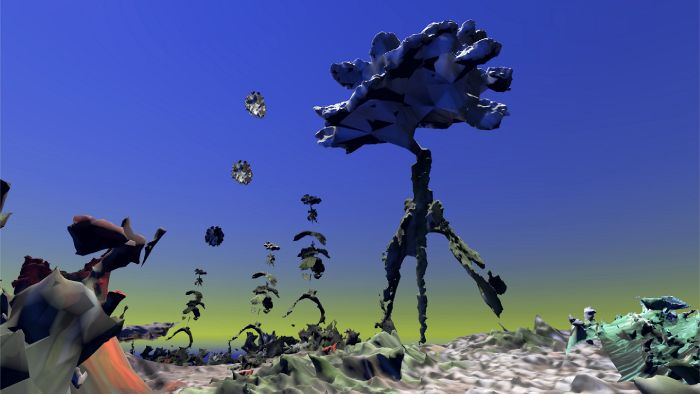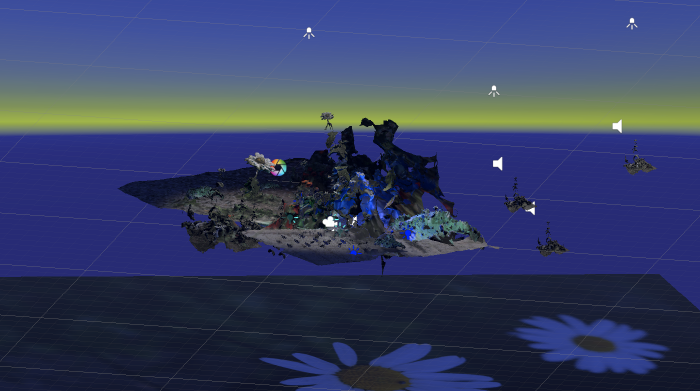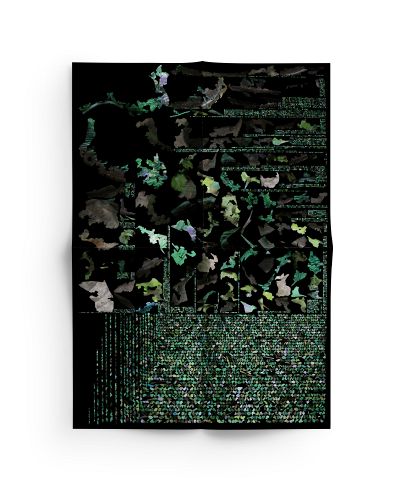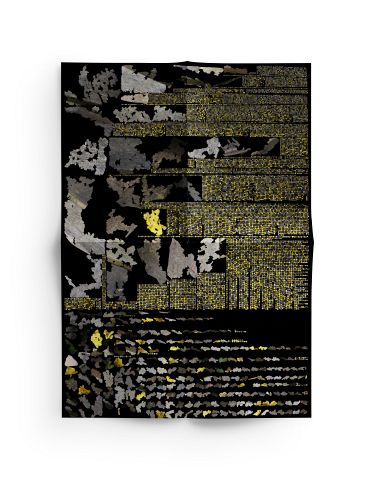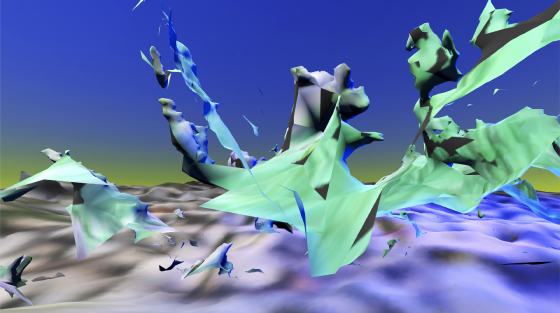No edit summary |
No edit summary |
||
| (26 intermediate revisions by the same user not shown) | |||
| Line 1: | Line 1: | ||
''' | '''The Data Garden''' | ||
[[File:flower.jpg|700px]] | [[File:flower.jpg|700px]] | ||
the | We are now all in the epoch of Anthropocene, in which the the landscape, geology and ecosystem has changed a lot owing to the human activity. And how will the landscape looks like after these dramatic changes and what will be left by the Post-Anthropocence? To answer this question, I fed the computer with photos of flowers from reality, which represents prettiness and perfectness, and got this new landscape with error and randomness in another reality. | ||
https://vimeo.com | {{#ev:vimeo|https://vimeo.com/363417376}} | ||
'''Technique that I have applied''' | |||
photogrammetry, MeshRoom, MeshLab, a DSLR, Unity | |||
'''
Process and Concept''' | |||
[[File:Screen Shot 2019- | |||
[[File:Screen Shot 2019-07-15 at 10. | [[File:Screen Shot 2019-09-30 at 9.11.50 PM.png|700px]] | ||
At the class we learned the technique of photogrammetry and I was interested in how computer can build up meshes and what the limitations of this technique are. I have tried several different objects, for example, a broken ballon, a cardboard with several reed needle on it, a crumpled paper ball and so on. With all of them, it was not possible to build up anythings… but only with an avocado seed!
| |||
The seed was almost perfect built. My classmates were amazed by how the model was built. However, interestedly, it was not because of the avocado seed itself but because of the cloth with plaid behind the seed, which I used to give hints for the camera to recognize the location. They said that it looks like a huge monument at a mysterious landscape, which gave me the inspiration of my works. I am then interested at the boundary of this technique. That is, the error and the imperfectness that are caused by the technical boundary of photogrammetry is the topic that I wanted to focus on. My first VR experience was by a project, which this technique is applied to preserve cultural heritages and monument which are under human and natural threaten. But what about the nature? We are now living in the era of Anthropocene, several plants, animals and landscapes are endangered owning to human behaviors. So, if we can apply technology to transfer our cultural heritage into virtual heritage, would it be possible to store the nature that are destroyed by us and keep a “virtual nature” for the future generation? When I doing my work for this project, those are the questions in my mind.
| |||
Thus, I decided to use plants as objects for my models, which often lead to models with error and incompleteness. Then I decided to use flowers as the main object. First of all, the model look graphically more interesting, owing the the contrast color between color of flowers and green. Secondly, flowers are often represented as purity, perfectness and beauty, which is the opposite to the error that I am seeking from the models for. Last but the most important, people tend to make artificial flowers with plastic, which I think might be interested to use real flowers but also plastic flowers as my models.
| |||
'''Final Presentation''' | |||
<gallery> | |||
File:garden2.png | |||
File:garden3.jpg | |||
File:garden4.jpg | |||
File:garden5.png | |||
File:garden6.png | |||
</gallery> | |||
In my final work of this semester, I have use only two models in total. Since the data of the mesh is too huge to put more in one project. Besides, I also found that it is graphically more interesting if I use less models by copy, cut, and paste to create the entire world. In addition, excepts of the VR experience, I have also created some posters by using the alpha texture from models as the following. They are the raw ingredients of my models and I have displayed these posters with the unity game with a filing cabinet
. | |||
[[File:green_poster.jpg|400px]][[File:yellow_poster.jpg|370px]] | |||
'''Difficulties that I have encountered''' | |||
The result turn out that not all the models are easy to apply to my project. Building a proper models to be used is not as easy as I thought. Sometimes the background doesn’t fit and some meshes have too much mistakes so that unity can not run so well. The other difficulties that I have faced with, was that somehow meshes from photogrammetry are super large. Even I have cut some parts of the mesh, when we bring it to Unity, the rest is still there. And the central axis is another big issue to arrange meshes by Unity. So, **advice**, if you want to use the models from photogrammetry for your project, try first to figure out how to idealize the meshes.
| |||
[[File:Screen Shot 2019-07-15 at 10.07.09 PM.png|560px]] | |||
'''The Plan for the Future''' | |||
During the class I have also built up other scene like a huge self-generated and rotating model with different geometric shapes and another scene using the alpha pattern from models to create a white clean gallery room of patterns. It could be a good idea to combine this three scenes together with portals, so that users can have more things to go around rather than only abstract graphical objects. The other possibility is to add a image capture function. I have observed the by the VR showcase, the projection on the wall from the user with VR glasses on doesn’t transmit relevant messages. It might be cooler to use synthesize technique to send images to others or with a printer printing out pictures simultaneously. So that the VR installation could be more completed. Last, I have to make more models with photogrammetry! | |||
Latest revision as of 23:22, 16 October 2019
The Data Garden
We are now all in the epoch of Anthropocene, in which the the landscape, geology and ecosystem has changed a lot owing to the human activity. And how will the landscape looks like after these dramatic changes and what will be left by the Post-Anthropocence? To answer this question, I fed the computer with photos of flowers from reality, which represents prettiness and perfectness, and got this new landscape with error and randomness in another reality.
Technique that I have applied
photogrammetry, MeshRoom, MeshLab, a DSLR, Unity
Process and Concept
At the class we learned the technique of photogrammetry and I was interested in how computer can build up meshes and what the limitations of this technique are. I have tried several different objects, for example, a broken ballon, a cardboard with several reed needle on it, a crumpled paper ball and so on. With all of them, it was not possible to build up anythings… but only with an avocado seed!
The seed was almost perfect built. My classmates were amazed by how the model was built. However, interestedly, it was not because of the avocado seed itself but because of the cloth with plaid behind the seed, which I used to give hints for the camera to recognize the location. They said that it looks like a huge monument at a mysterious landscape, which gave me the inspiration of my works. I am then interested at the boundary of this technique. That is, the error and the imperfectness that are caused by the technical boundary of photogrammetry is the topic that I wanted to focus on. My first VR experience was by a project, which this technique is applied to preserve cultural heritages and monument which are under human and natural threaten. But what about the nature? We are now living in the era of Anthropocene, several plants, animals and landscapes are endangered owning to human behaviors. So, if we can apply technology to transfer our cultural heritage into virtual heritage, would it be possible to store the nature that are destroyed by us and keep a “virtual nature” for the future generation? When I doing my work for this project, those are the questions in my mind.
Thus, I decided to use plants as objects for my models, which often lead to models with error and incompleteness. Then I decided to use flowers as the main object. First of all, the model look graphically more interesting, owing the the contrast color between color of flowers and green. Secondly, flowers are often represented as purity, perfectness and beauty, which is the opposite to the error that I am seeking from the models for. Last but the most important, people tend to make artificial flowers with plastic, which I think might be interested to use real flowers but also plastic flowers as my models.
Final Presentation
In my final work of this semester, I have use only two models in total. Since the data of the mesh is too huge to put more in one project. Besides, I also found that it is graphically more interesting if I use less models by copy, cut, and paste to create the entire world. In addition, excepts of the VR experience, I have also created some posters by using the alpha texture from models as the following. They are the raw ingredients of my models and I have displayed these posters with the unity game with a filing cabinet .
Difficulties that I have encountered
The result turn out that not all the models are easy to apply to my project. Building a proper models to be used is not as easy as I thought. Sometimes the background doesn’t fit and some meshes have too much mistakes so that unity can not run so well. The other difficulties that I have faced with, was that somehow meshes from photogrammetry are super large. Even I have cut some parts of the mesh, when we bring it to Unity, the rest is still there. And the central axis is another big issue to arrange meshes by Unity. So, **advice**, if you want to use the models from photogrammetry for your project, try first to figure out how to idealize the meshes.
The Plan for the Future
During the class I have also built up other scene like a huge self-generated and rotating model with different geometric shapes and another scene using the alpha pattern from models to create a white clean gallery room of patterns. It could be a good idea to combine this three scenes together with portals, so that users can have more things to go around rather than only abstract graphical objects. The other possibility is to add a image capture function. I have observed the by the VR showcase, the projection on the wall from the user with VR glasses on doesn’t transmit relevant messages. It might be cooler to use synthesize technique to send images to others or with a printer printing out pictures simultaneously. So that the VR installation could be more completed. Last, I have to make more models with photogrammetry!
